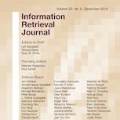While vision transformers show promise in numerous image restoration (IR) tasks, the challenge remains in efficiently generalizing and scaling up a model for multiple IR tasks. To strike a balance between efficiency and model capacity for a generalized transformer-based IR method, we propose a hierarchical information flow mechanism for image restoration, dubbed Hi-IR, which progressively propagates information among pixels in a bottom-up manner. Hi-IR constructs a hierarchical information tree representing the degraded image across three levels. Each level encapsulates different types of information, with higher levels encompassing broader objects and concepts and lower levels focusing on local details. Moreover, the hierarchical tree architecture removes long-range self-attention, improves the computational efficiency and memory utilization, thus preparing it for effective model scaling. Based on that, we explore model scaling to improve our method's capabilities, which is expected to positively impact IR in large-scale training settings. Extensive experimental results show that Hi-IR achieves state-of-the-art performance in seven common image restoration tasks, affirming its effectiveness and generalizability.
翻译:暂无翻译





